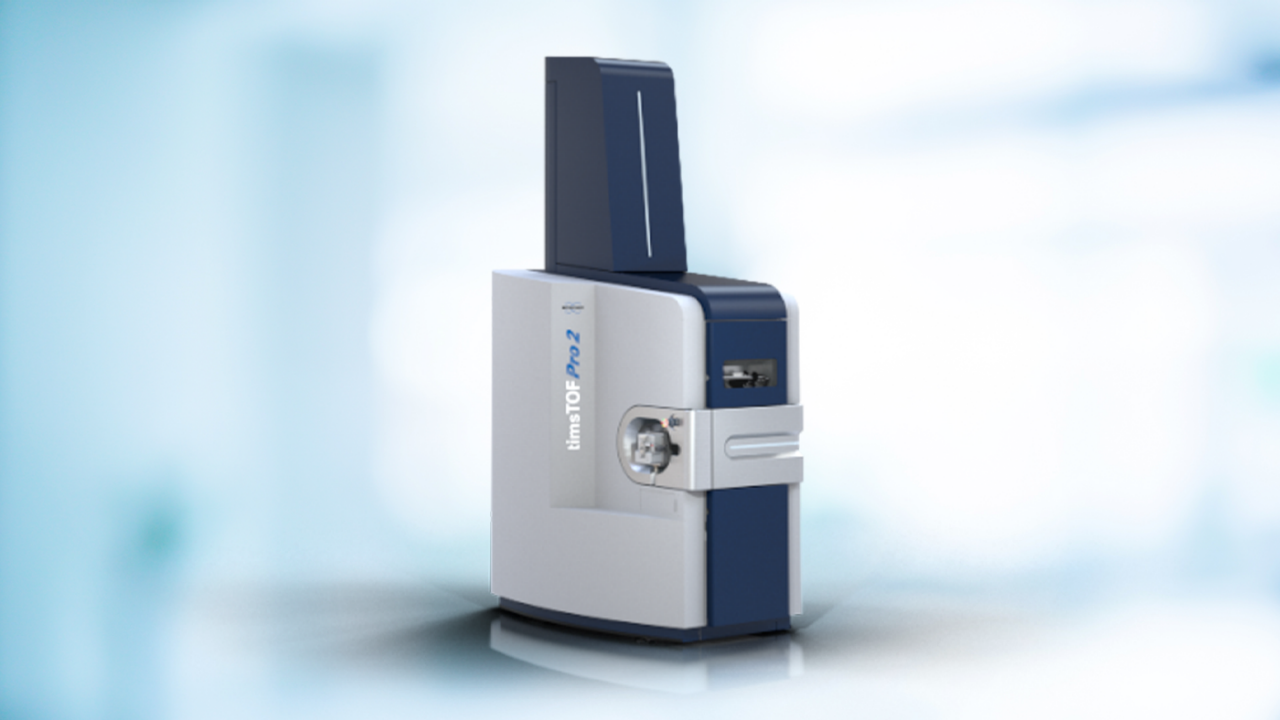生物制剂和生物仿制药的特征
Overview
相似性评估,高阶结构,翻译后修饰,聚集,多糖疗法和填充检查
In contrast to small molecule drugs, which are chemically synthesized, biologics and biosimilars, also known as biotherapeutic drugs, are produced from living organisms such as bacteria, yeast and mammalian cells. Consequently, they are usually very large molecules (peptides, small proteins, antibodies, polysaccharides, etc.) that can exhibit post-translational modifications and certain degrees of structure variability.
Confirmation of the identity of the therapeutic drug through structural characterization, from the primary amino acid sequence to the higher order structure, together with impurity control is therefore critical to ensure efficacy and patient safety.
布鲁克的质谱解决方案超出了传统的肽映射和完整的质量分析。这些解决方案将最终的性能,速度和多功能性与强大的功能流量软件相结合,可为生物制剂开发人员准备好访问正交特征方法。These include monoclonal antibody (mAb) subunit analysis using middle up and middle down approaches for the unambiguous detection and characterization of sequence variants and modifications including deamidation, oxidation and N-terminal clipping: as well as higher order structure studies for the detailed characterization of disulfide bridges, conformational epitopes, structural changes upon perturbation to calculating accurate drug antibody ratios (DAR) in antibody drug conjugate (ADC) studies.
Disulfide bond (DSB) analysis and hydrogen deuterium exchange (HDX) have emerged as technologies that can be employed to gain insights into protein structure. These insights are critical for determining structural similarity for biosimilars, or for monitoring protein stability during drug development. The tertiary structure of therapeutic proteins is key to their activity and stability.
研发实验室需要基于未还原蛋白质的单一摘要,并且在没有酶特异性或天然DSB的事先了解的情况下,可以在生物药物中自动化DSB分析。由于这些蛋白质的复杂性以及它们包含多种二硫键键的事实,分析具有挑战性,通常需要通过减少和未还原蛋白质的胰蛋白酶消化以及对这两种分析的手动比较。
In contrast to small molecule drugs, which are chemically synthesized, biologics and biosimilars, also known as biotherapeutic drugs, are produced from living organisms such as bacteria, yeast and mammalian cells. Consequently, they are usually very large molecules (peptides, small proteins, antibodies, polysaccharides, etc.) that can exhibit post-translational modifications and certain degrees of structure variability.
Confirmation of the identity of the therapeutic drug through structural characterization, from the primary amino acid sequence to the higher order structure, together with impurity control is therefore critical to ensure efficacy and patient safety.
布鲁克的质谱解决方案超出了传统的肽映射和完整的质量分析。这些解决方案将最终的性能,速度和多功能性与强大的功能流量软件相结合,可为生物制剂开发人员准备好访问正交特征方法。其中包括使用中间和中间方法的单克隆抗体(MAB)亚基分析,用于序列变体和修饰的明确检测和表征 - 包括脱氨酸,氧化和N末端剪辑;以及二硫键,构象表位和扰动后结构变化的详细表征的高阶结构研究;并计算抗体药物结合物(ADC)研究中的精确药物抗体比(DAR)。
Disulfide bond (DSB) analysis and hydrogen deuterium exchange (HDX) have emerged as technologies that can be employed to gain insights into protein structure. These insights are critical for determining structural similarity for biosimilars, or for monitoring protein stability during drug development. The tertiary structure of therapeutic proteins is key to their activity and stability.
研发实验室需要基于未还原蛋白质的单一摘要,并且在没有酶特异性或天然DSB的事先了解的情况下,可以在生物药物中自动化DSB分析。由于这些蛋白质的复杂性以及它们包含多种二硫键键的事实,分析具有挑战性,通常需要通过减少和未还原蛋白质的胰蛋白酶消化以及对这两种分析的手动比较。
Solutions
NMR is especially sensitive to changes to higher order structure at atomic resolution, making it ideally suited for similarity assessment of biologics and biosimilars. NMR allows for intact protein analysis, enabling structural evaluation of therapeutic drugs without modification, in conditions that are physiologically relevant. The selectivity and quantitative nature of magnetic resonance means that potency determination, impurity profiling and degradation studies (eg 多山矿石)可以直接执行快速,轻松的测试,而无需进行响应因素计算或传统LC方法所需的方法重建活动,从而节省了时间和降低成本。此外,台式时间域NMR(TD-NMR)正在成为分析的重要技术蛋白质聚集体and 100%fill-check小瓶和注射器。
Click here to view exclusive biologics and biosimilars content.
傅里叶变换红外(ir)光谱n be used to analyze water-soluble and membrane proteins such as nuclear receptors, which are currently decisive targets in drug research and development, being associated with conditions such as Alzheimer's, and Parkinson's disease, diabetes and obesity. FT-IR is typically applied in protein secondary structure elucidation, detection of conformational changes and monitoring of protein dynamics like aggregation, precipitation and crystallization. Infrared protein analysis is a quick and relatively inexpensive technique used for formulation optimization, stability studies during drug development and QC of protein drug products.
表面等离子体共振(SPR)是从动力学角度表征相互作用的黄金标准方法。尽管基于解决方案的方法为互动提供了基于平衡的观点,但对SPR的无标签和实时分析可深入了解动力学,这是一种关键特征,可以更精确地了解交互作用。使用基于平衡的方法(例如ELISA)表现出类似亲和力的生物制剂可能具有不同的非速率,随后具有不同的生物学结果。但是,SPR可以在目标蛋白质上使用最佳的半衰期鉴定生物制剂。
SPR还允许研究人员鉴定靶向蛋白质不同表位的抗体。同样,有条件的结合基于pH,例如就像在癌症组织中一样,可以轻松研究不同缓冲液对结合相互作用的影响。这些方法有助于理解在生理上更可翻译的环境中的互动。
相关产品
Webinary
Webinars
Videos
Videos
więcejInformacji
Wsparcie
实验室
Service & Life Cycle Support for Magnetic Resonance and Preclinical Imaging
布鲁克致力于在整个购买周期内为客户提供无与伦比的帮助,从初始查询到评估,安装和仪器的寿命,现在以LabScape服务概念为特征。bob电竞官方网站
实验室维护协议,现场点播和增强实验室旨在为现代实验室提供一种新的维护和服务方法bob电竞官方网站





